Nothing says “I love you” like a diamond. Valentine’s Day is fast approaching, and untold numbers of lovestruck men will be pressing their noses to the jewellery store glass, wondering which diamond-topped ring will make their partner’s heart sing, which will elicit that crucial, breathless, sobbing “yes”, and most importantly, which they can afford. And unfortunately guys, size does matter.
Our love for diamonds is enduring. From the sheer effort of their formation, deep down inside the earth under tremendous pressure, crushed into shape over millions of years, the process is a natural wonder in itself. Then there’s the mining, a dangerous and sometimes bloody industry extracting the precious but hard-to-get rocks. The murky world of the trader, the black market, the daring robberies. The skill of the craftsmen who transform the nondescript lumps into things of unparalleled beauty. The romance. The extravagant gestures of love. And at the basest level, the human being’s primal love for sparkly things. All this contributes to a mythology around diamonds that shows no signs of fading.
The symbolic power of the diamond is as strong as the gems themselves, and the worlds of art, design and pop culture are as richly decorated with diamonds as a favoured courtesan in an ancient palace. In film they are forever, and a girl’s best friend. In music you can find them on the soles of her shoes, or in the sky with Lucy. They can be crazy. They can be called Neil. In the visual arts, of course, is where the diamond shines most brightly.
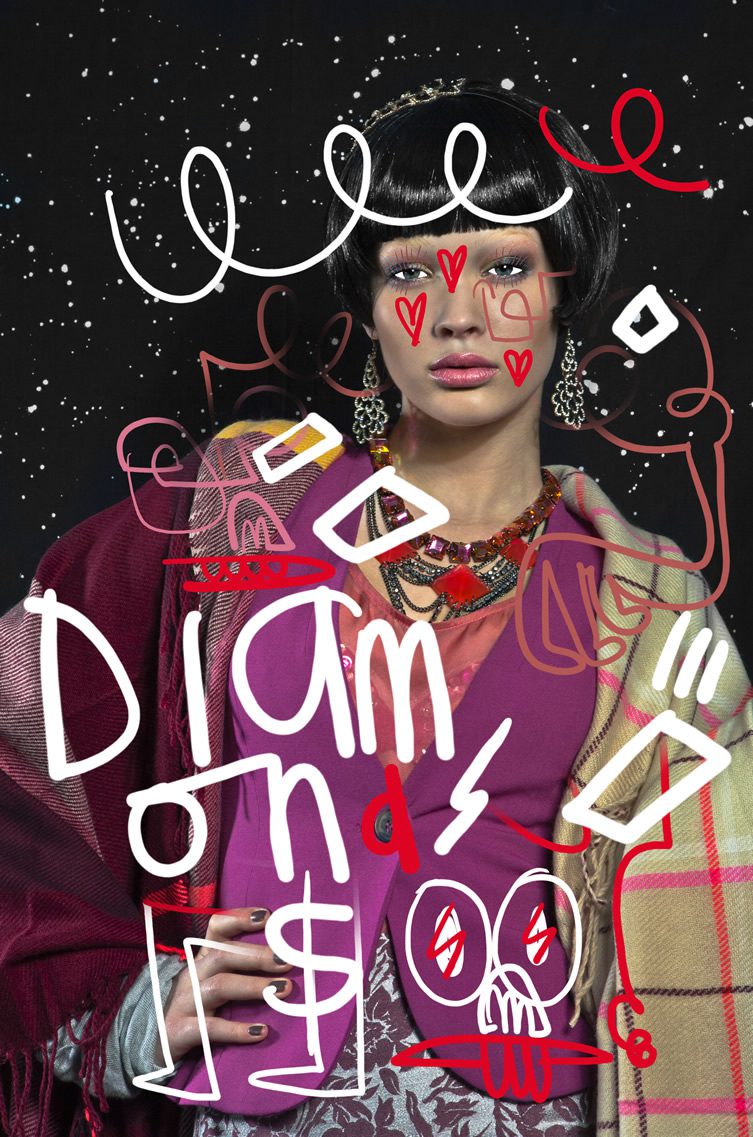
Illustration: Jon Burgerman
Photography: Kirsten Becken
Styling: LIDA LUND
Models: Elisa @SEEDS, Luisa @Aquamarine
Make-Up & hair: Phuong Thai
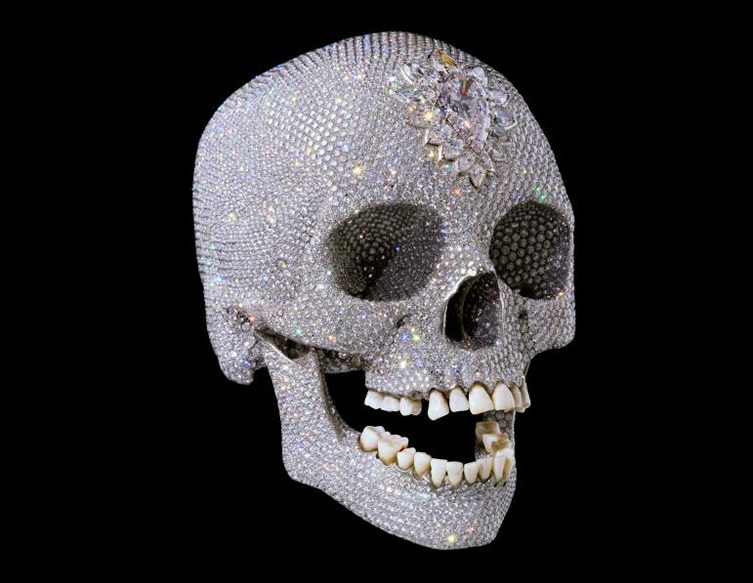
Photo, Prudence Cuming Associates
and Stephen White
© Damien Hirst and Science Ltd.
All rights reserved, DACS 2012
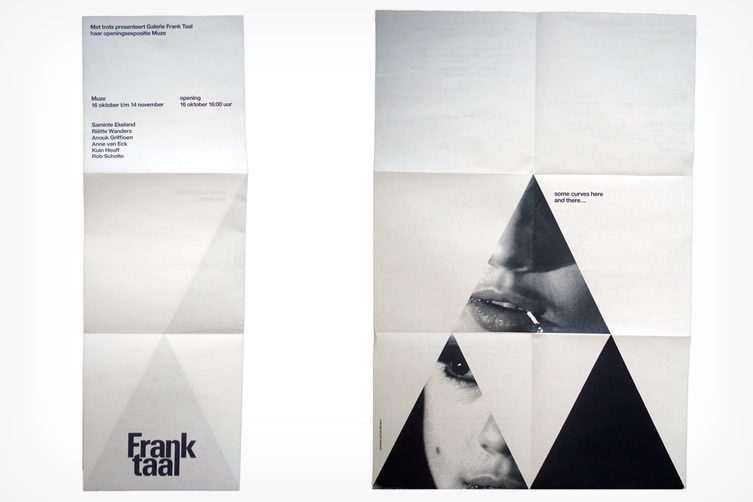
Almost Modern,
Gallerie Frank Taal Invite
14x14cm uitnodiging
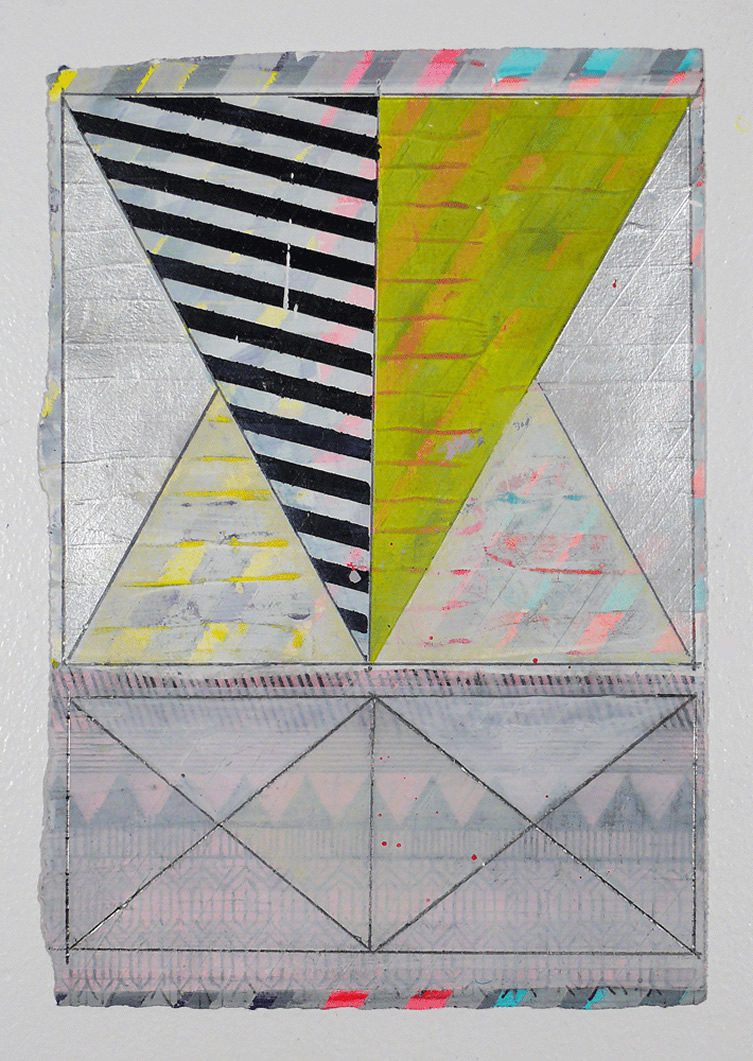
Jennifer Sanchez,
NY12#26, 11″ X 7.5″,
mixed media on paper, 2012
The shape of a cut diamond is universal, instantly recognisable and a source of great artistic investigation. Clear planes at shifting angles reflect light in magical ways, and this effect continues to interest artists. Retail website WP Diamonds asked us to investigate the everlasting lure of the precious stone in art and design, pulling out some of our favourite examples, herein lies the sparkly fruits of our labour…
A memorable example from recent times is Arran Gregor’s Mirror Wolf, whose sleek shape is constructed from diamond-like shards that obfuscate the animal, making it seem elusive. Two dimensional diamonds can be equally effective. For its brilliant Moon Diamond print, design studio The Best Part deconstruct a picture of the full moon and reassemble it in a diamond pattern, the change in shade between each section creating the illusion of an extra dimension.
Diamond’s extraordinary physical properties have proven the inspiration for memorable artworks, too. For the Love of God, Damien Hirst‘s 2007 sculpture, juxtaposes the mortality of man, represented by a platinum skull and human teeth, with the hardness, durability and beauty of the diamonds which encrust the entire skull.
Love, death, desire, hope, the unattainable, grotesque wealth – all these things are inextricably linked to diamonds. Is it any wonder they hold such fascination? Nowhere are these contradictions more evident than in jewellery. Whether you are about to pop the question, looking to escape the doghouse for some serious transgression, or just feel like buying yourself something nice, there’s a lot happening in the world of artisanal jewellery. Julia deVille, like Hirst, loves to place her pretty gems in macabre settings, gripped by bony claws and even adorned with human hair. Sruli Recht, in contrast, leaves his stones unturned, using rough diamonds, still rich with all their potential, which can be interchanged as the occasion dictates with an innovative screw-in design. So remember this Valentine’s Day, with a diamond the possibilities are endless, and there is something, and someone, out there for everybody.
***
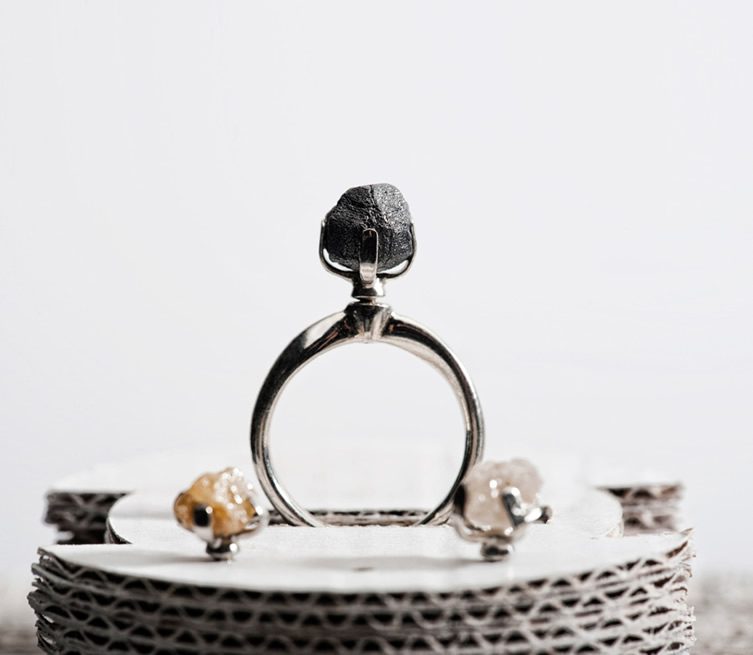
Sruli Recht,
r¿ng,
uncut rough diamond
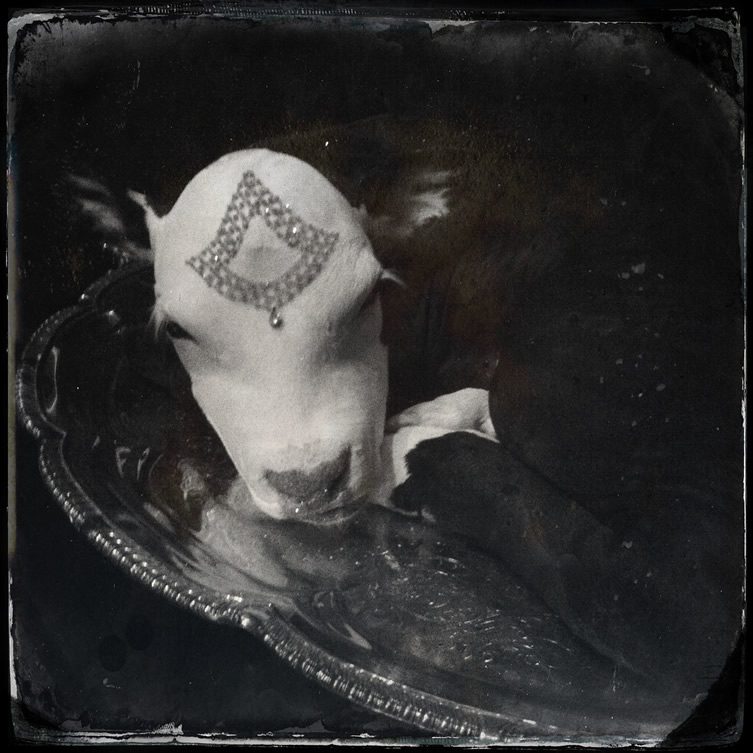
Julia deVille
Degustation at NGV,
Melbourne Now
Photo © Jellibat
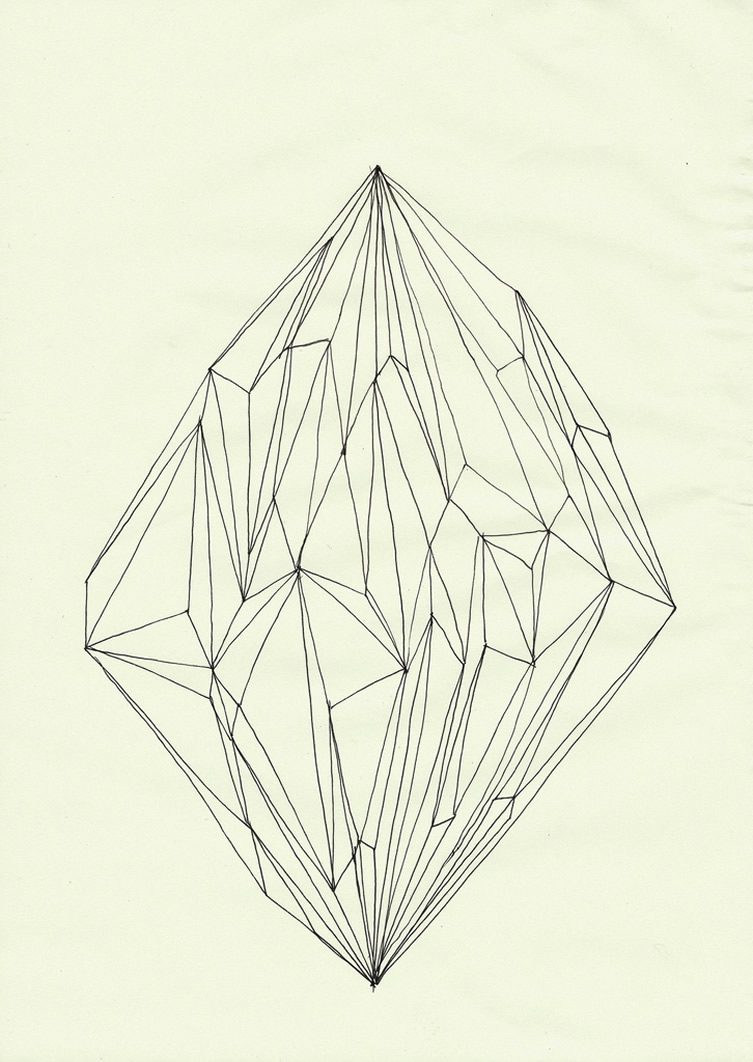
Connor Hoskings
ohdiamonddiamondthou—
littleknowestthemischief—
thouhastdone
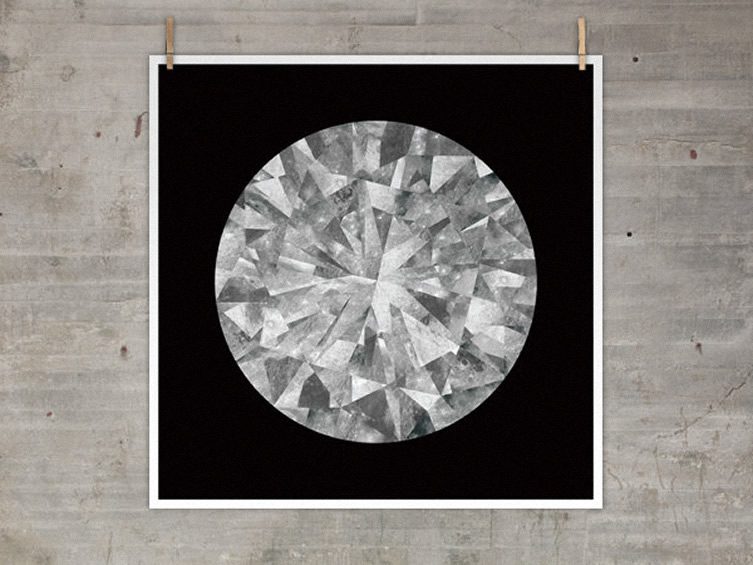
The Best Part,
Moon Diamond
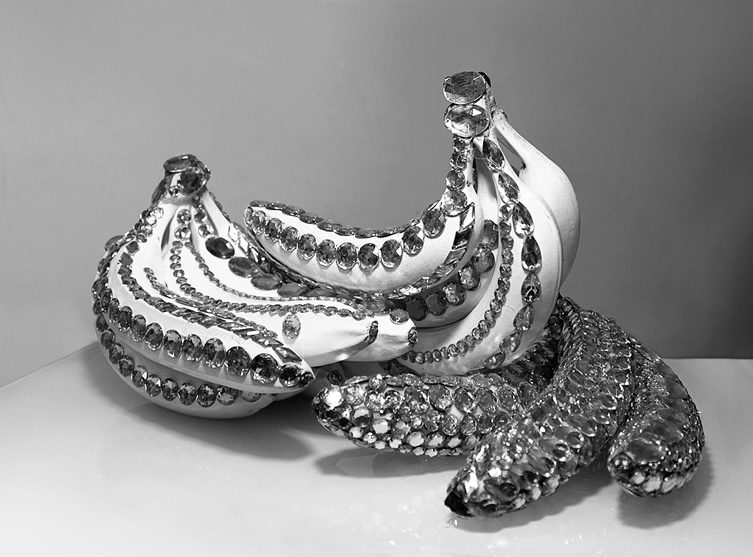
Luciana Rondolini,
My Silver Path,
Jewellery








